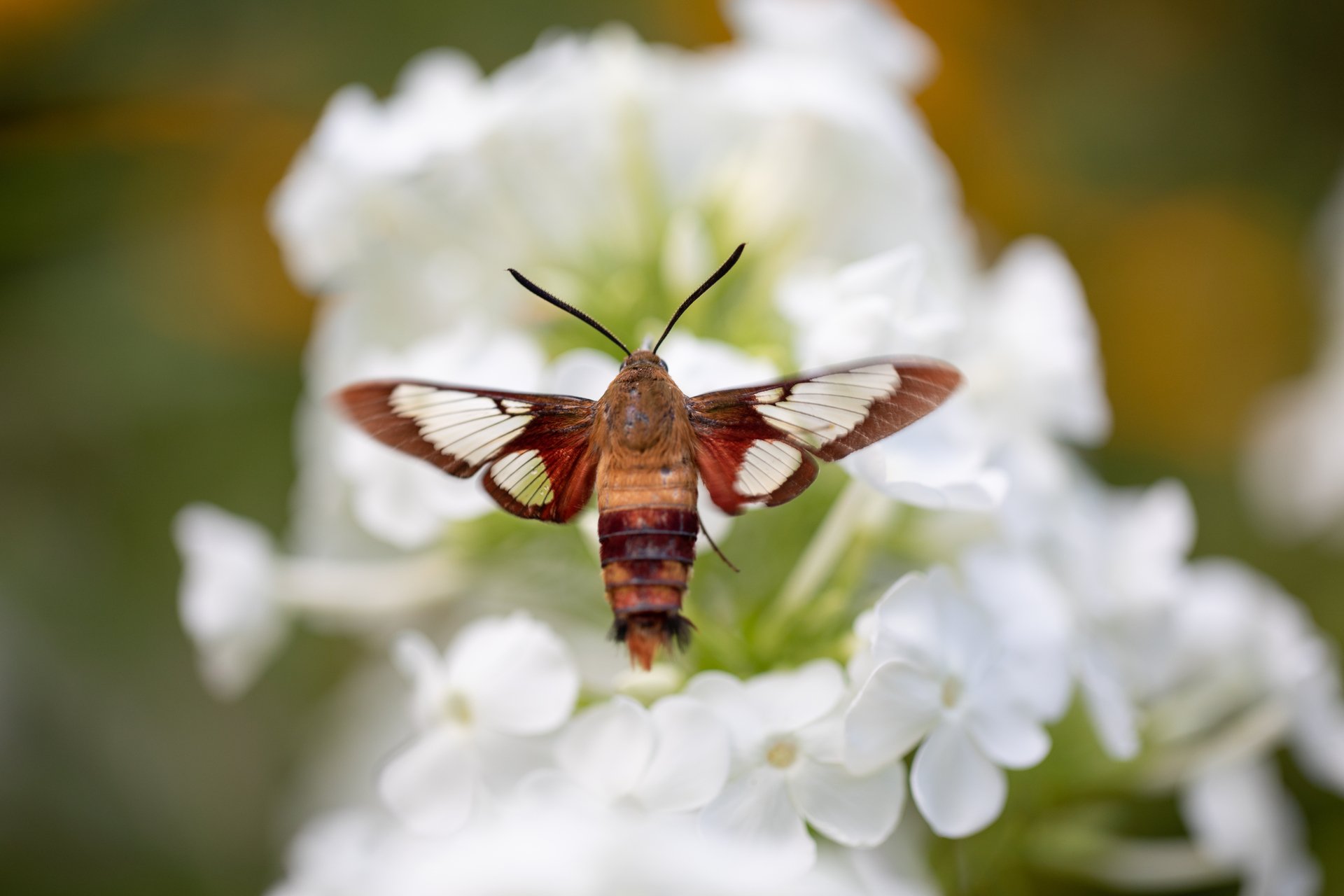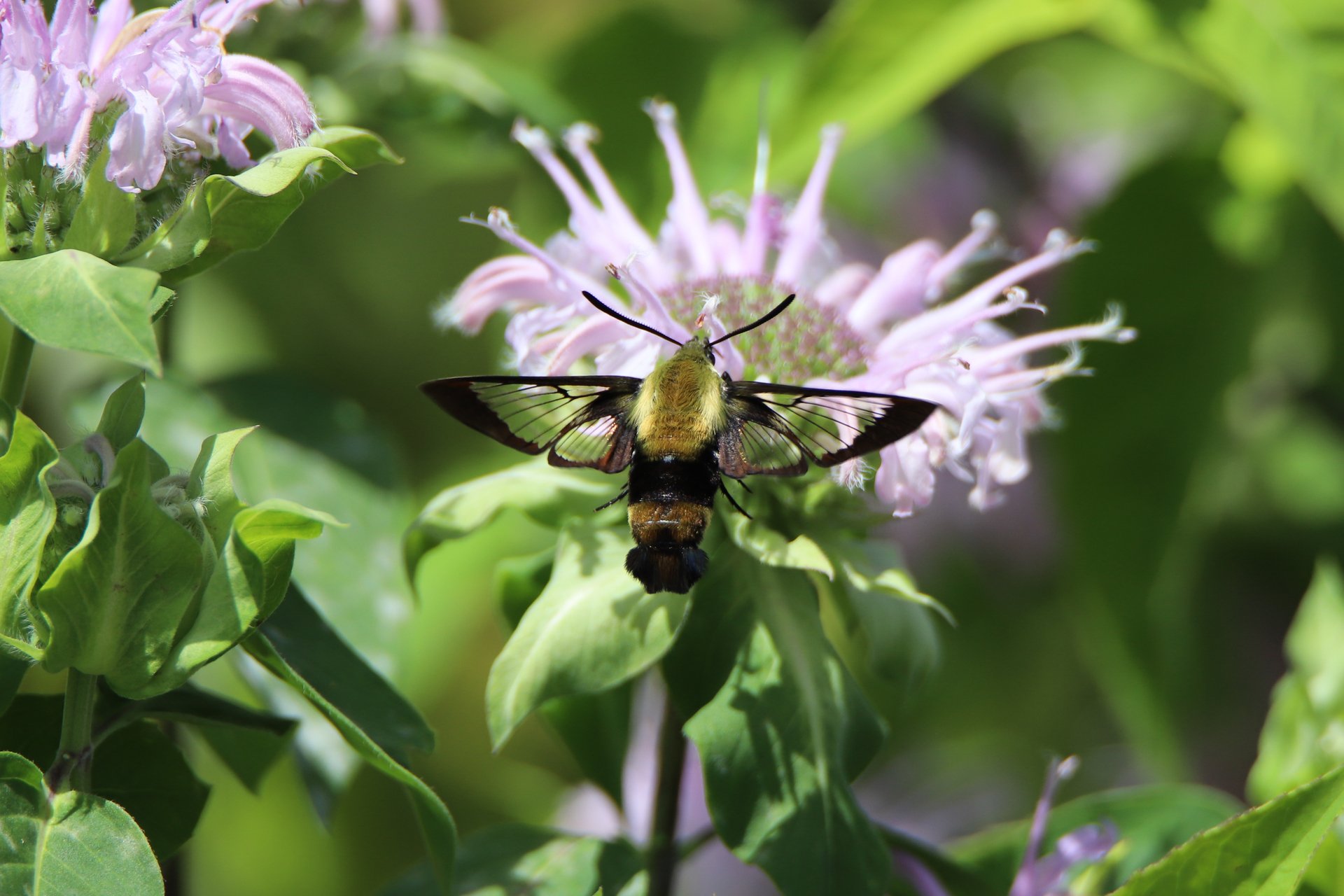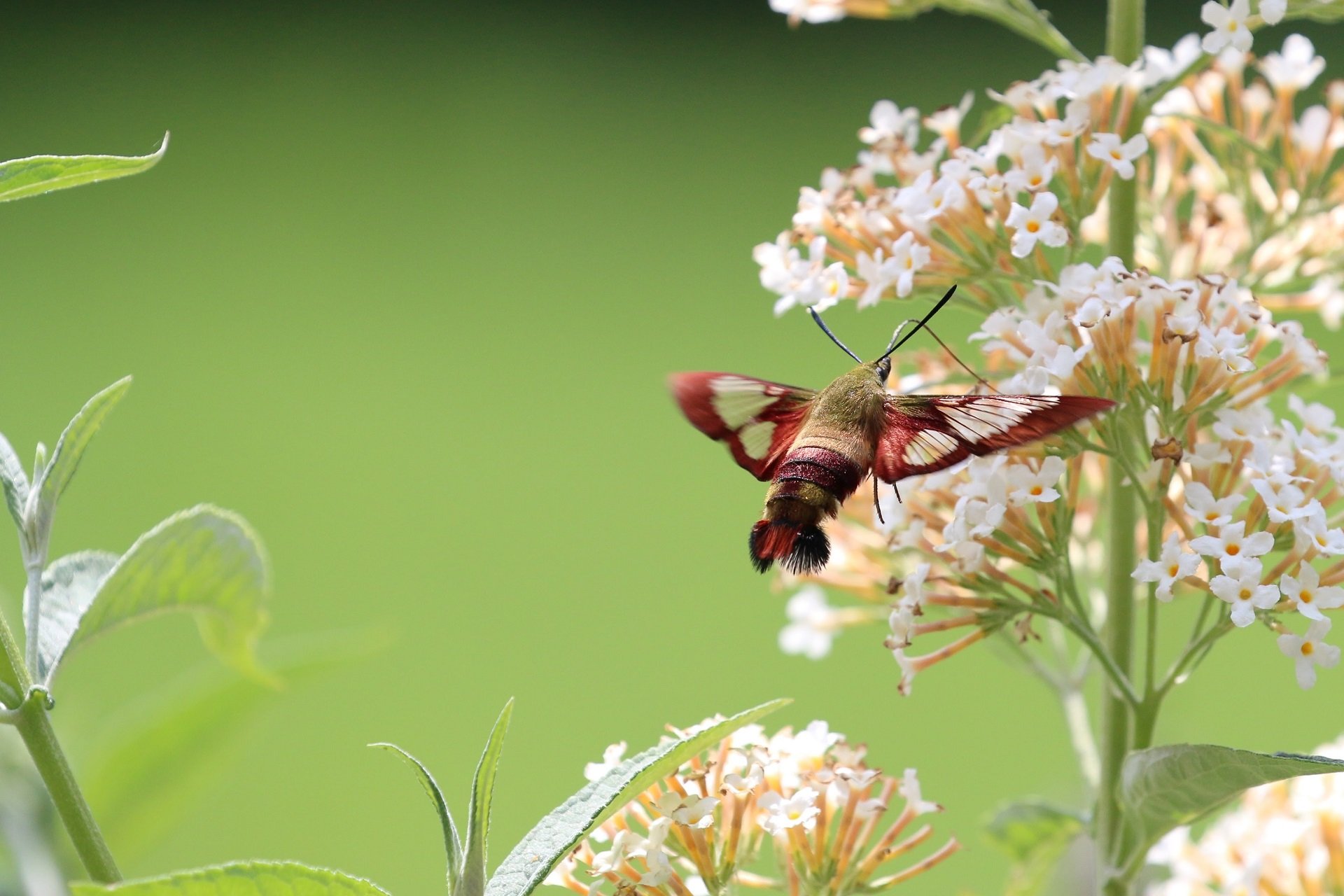Hummingbird Moth (Clearwing Moth)
At first sight, it’s easy to mistake a hummingbird moth for a tiny hummingbird. It feeds on the nectar of flowers, hovering with the body stationary, its transparent wings beating so fast as to be nearly invisible, and a long proboscis protruding beaklike into the blossom. In flight, the wings create a soft buzzing, also like a hummingbird.
How to Identify Hummingbird Moths
Hummingbird Moths are members of the sphinx moth family (Sphingidae), which have heavy bodies and long front wings. The wings of hummingbird moths are clear, with a black or brown border, and are nearly invisible when they fly. Males have a flared “tail” like that of a hovering hummingbird.
One obvious difference between the birds and the moths is size. The ruby-throated hummingbird can be 3” long. Hummingbird Moths are much smaller at 1-1/2” long.
There are two species you are most likely to see in Massachusetts

The Hummingbird Clearwing (Hemaris thysbe) is by far the most commonly seen. It has an olive back, a red-brown abdomen, and pale legs.

The Snowberry Clearwing (Hemaris diffinis) is usually yellow and black, with black legs. It also has a black line running through its eyes and down its sides.
Hummingbird Moth Life Cycle
While most sphinx moths fly at night, hummingbird moths fly during the day. They can be found in a wide variety of habitats, including open meadows, forest edges, and suburban gardens. They feed on flower nectar, dipping in a long thin proboscis.
Hummingbird Moth Caterpillars
Hummingbird moths lay their eggs on plants. The mature caterpillars are plump, and yellowish green (or sometimes brownish), with the spiky tail horn typical of most sphinx moth caterpillars.
Depending on the species, these caterpillars may eat the leaves of viburnums, honeysuckles, snowberry, blueberries, and members of the rose family. They pupate in a thin cocoon in leaf litter, where they remain during the cold months, emerging as moths in late spring or early summer to visit flowers during the warm months.
Why Hummingbird Moths Are Important
The hummingbird moth is a crucial pollinator, especially for twilight-blooming flowers that other pollinators, like bees and butterflies, often miss. Their long proboscises allow them to reach deep into flowers, facilitating the pollination of plants that might otherwise struggle to reproduce. This moth helps maintain the health and biodiversity of various ecosystems by ensuring that a wide range of plant species can successfully propagate.
How Mass Audubon is Supporting Hummingbird Moths
Mass Audubon protects native plants and habitats that Hummingbird Moths depend on at our wildlife sanctuaries and beyond. By protecting habitats, employing active land management strategies, and engaging our community, we can support pollinators like the Hummingbird Moth. Learn more about our work
How You Can Support Hummingbird Moths
Adult hummingbird moths feed on nectar, so filling your garden with native nectar-bearing plants is a great way to attract and support hummingbird moths, as well as hummingbirds and butterflies.
Mass Audubon supports wildlife like the Hummingbird Moth every day, but we couldn’t do it without the support of our 160,000+ members.
Help us support the Hummingbird Moth, and pollinators like them, by becoming a member today.
Stay Connected
Don't miss a beat on all the ways you can get outdoors, celebrate nature, and get involved.



